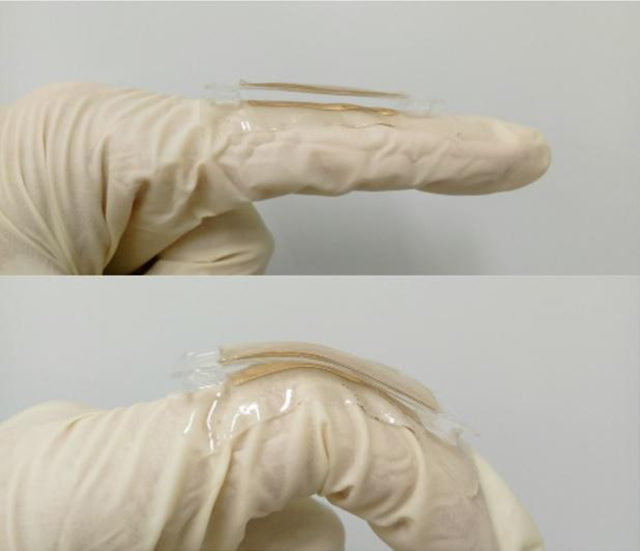Our body could power our gadgets in the future. At least that's what new research suggests.
It may sound like the stuff of science fiction but researchers are looking into how our movements could be used to generate electricity that could be harnessed to charge electronic devices such as smartphones.
Lead author Dr Qiaoqiang Gan, an associate professor of electrical engineering at University of Buffalo's School of Engineering and Applied Sciences, said: "No one likes being tethered to a power outlet or lugging around a portable charger.
"The human body is an abundant source of energy. We thought: 'Why not harness it to produce our own power?'"

Scientists have developed a metallic tab that has the capability to produce electricity via human movement (Nano Energy)
The process works by attaching a small metallic tab – called a triboelectric nanogenerator – to the body. The researchers say the tab is "capable of generating electricity from bending a finger and other simple movements".
Developed by the scientists, the tab is made up of two thin layers of gold with a silicon-based polymer called polydimethylsiloxane (PDMS) placed in between.
According to the scientists, the triboelectric nanogenerator was able to generate a maximum voltage of 124 volts, a maximum current of 10 microamps and a maximum power density of 0.22 milliwatts per square centimetre.
That's not enough to quickly charge a smartphone but it lit 48 red LED lights simultaneously, the researchers said.
Electricity is generated when body movements such as bending a finger causes friction between the gold layers and PDMS.

Could portable chargers become a thing of the past? (Mischenko/Getty ImageS)
Dr Yun Xu, also a lead author of the study and a professor at the Chinese Academy of Science's Institute of Semiconductors, said: "This causes electrons to flow back and forth between the gold layers.
"The more friction, the greater the amount of power is produced."
The team are now looking at improving the tab's performance in the next stages of their research, which includes using larger pieces of gold.
They are also working on developing a portable battery to store energy produced by the tab.
The research is published in the journal Nano Energy.
